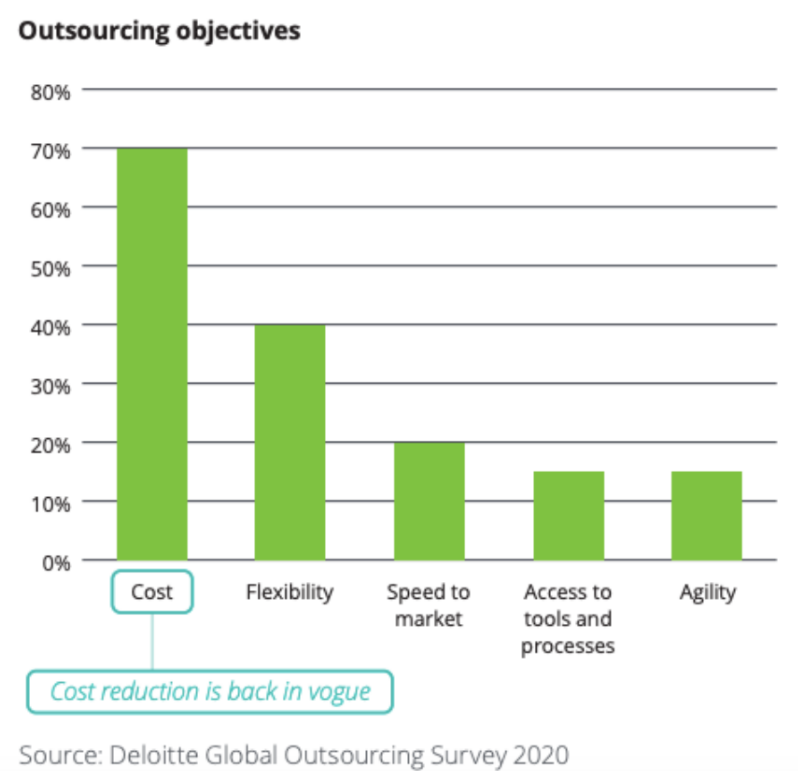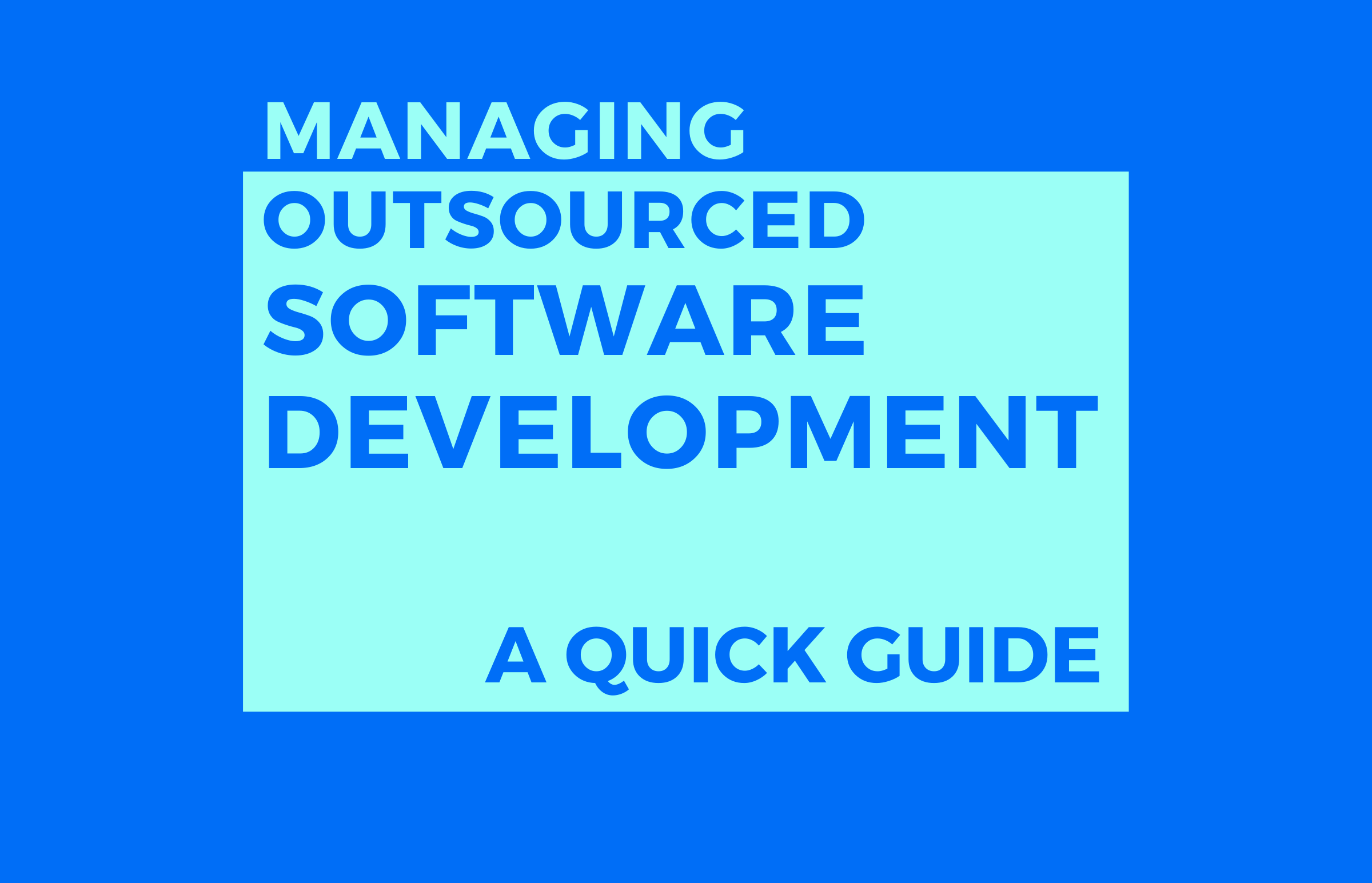There are many reasons why IT projects fail, but success stories have one thing in common: a well-thought-out strategy for managing outsourced software development teams.
Among other things, proper management ensures optimal resource allocation, maximizes productivity, and shortens time to market. These are important benefits considering that cost reduction is the number one reason organizations decide to outsource.

A good management strategy starts with choosing an outsourcing model that will make it easy to stay on top of things as a project manager. The extended or dedicated team model generally enables maximum control over outsourced developers and gives you a good grasp of what they are up to at all times.
That said, there is a lot more that goes into managing outsourced software development.
In this article, we look at some of the key issues involved in running a successful dedicated team. We also provide tips for getting the most from your outsourcing relationship.
Let’s dive right in!
5 Tried-and-Tested Tips for Managing Outsourced Teams
At Zartis, we’ve been running an outsourcing business and building successful collaborations with 50+ clients, some running for 5+ years and still ongoing.
Over the years, we’ve learned many lessons the hard way so that you don’t have to — such as these dos and don’ts for managing outsourced software development teams:
1. Communicate Your Plans Well and Often
Clear and effective communication is the single most important tool in the project manager’s arsenal.
One thing that often gets overlooked here is the importance of painting the big picture (as opposed to focusing on short-term goals and individual tasks) to remote team members. You want to provide them with ample context, just like your in-house employees. This ensures that outsourced teams understand the project requirements and your expectations for the outsourcing relationship.
Key details you may want to share include:
- Your overall vision for the project
- Any related long-term projects in the works
- Key performance indicators (KPIs)
- Your short, mid, and long-term business goals
To get everyone on the same page, it’s also essential to communicate often and regularly. The outsourced developers should be in full sync with your in-house team, so be sure to include them in all communication channels, daily meetings, standups, etc.
2. Over-explain Your Workflows and Best Practices
Another critical aspect of effective communication is introducing the dedicated team to all internal resources and workflows they’ll need in their work, including:
- Your tech stack
- Programming tools and processes
- The post-production environment
- Coding best practices
- The design patterns your teams use
- Internal documentation and self-learning resources
A good rule of thumb is to always err on the side of over-explaining your software development process. Assume that there may be differences in work style between your in-house and remote teams, even if the outsourced engineers are from a neighboring country.
3. Enable Collaborative Work and Knowledge Sharing
Collaboration is one of the biggest benefits of outsourcing. Working in tandem, your remote and in-house teams can build and deliver high-quality solutions faster and at a lower cost.
You can enable a culture of collaboration and encourage developers to share their technical expertise through:
- Company-wide and team events
- Informal knowledge-sharing sessions
- Peer programming
- Peer reviews
- Regular check-ins with developers
- Regular feedback loops
You should also consider setting up a dedicated communication channel or repository where both internal and external teams can access educational materials.
4. Tap Into Support Structures Provided by Your Outsourcing Partner
Some software development outsourcing companies offer support services to help you make the most of your outsourcing relationship and maximize business growth.
For instance, at Zartis we have a dedicated account manager who is there to answer all your questions, address any concerns you might have, enable the flow of communication and gather feedback from the remote team, and more.
If your vendor offers similar services, be sure to make full use of them to ensure a maximally productive and mutually beneficial long-term relationship with your outsourced developers.
5. Treat Remote Developers as Part of Your In-House Workforce
When your dedicated team members feel welcomed and cherished as an integral part of the organization, they are far more likely to become personally invested in your business success and helping you achieve your strategic goals.
This is especially important in larger companies, which sometimes feel impersonal and struggle to create an authentic sense of belonging in remote employees. To make sure that doesn’t happen, collaboration, continuous communication, and building an inclusive environment are key.
Choosing the Right Software Development Outsourcing Partner
Managing outsourced software development teams may seem daunting, but the good news is that you don’t have to do it alone if you choose the right partner for your needs.
If you are at this stage of your outsourcing journey, here are a few tips for finding a vendor you can rely on:
Know Which Outsourcing Model Fits Your Needs Best
This will largely depend on your budget and project requirements. For clients in Western Europe and North America, offshoring is often the most affordable option, onshoring is the most expensive, and nearshoring sits somewhere in between. Offshoring works best for simpler projects that don’t need a lot of oversight. Nearshoring and onshoring are better suited for complex, long-term projects that require intensive cooperation with your in-house team.
Create a Shortlist of Eligible Vendors
Use your professional network and online resources like LinkedIn and Glassdoor to narrow your options down to 5–10 outsourcing providers that seem like a good fit. Things to look for include relevant industry experience, case studies or success stories, third-party awards or certifications, and client and employee ratings.
Have Interviews with the Top Candidates
Important questions to ask include whether they have worked on similar software projects in the past, and whether they are willing (and able) to tailor their services to your business requirements. You also want to ensure that their developers have the expertise you need. Don’t forget to ask about the payment structure (see our take on fixed-fee vs. time-and-materials contracts) and the developer hourly rate.
Pick the Best Fit and Build a Long-Term Relationship
When you are ready, choose an outsourcing partner that is flexible, cooperative, and can deliver the technical expertise and cultural fit you are looking for. Then, dedicate sufficient time and resources to building a successful long-term relationship.
Managing Outsourced Software Development with Zartis
Managing outsourced teams shouldn’t take time and attention away from higher-value work. You have more important things on your plate, so why don’t you let us take care of your remote engineers?
We currently manage 30+ dedicated development teams for our clients. At Zartis, we know what it takes to set up successful processes and long-lasting relationships to power your digital transformation.
To get started, check out our team augmentation services.


